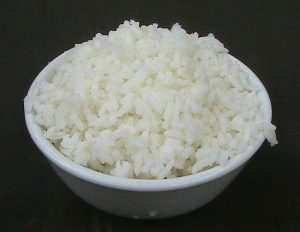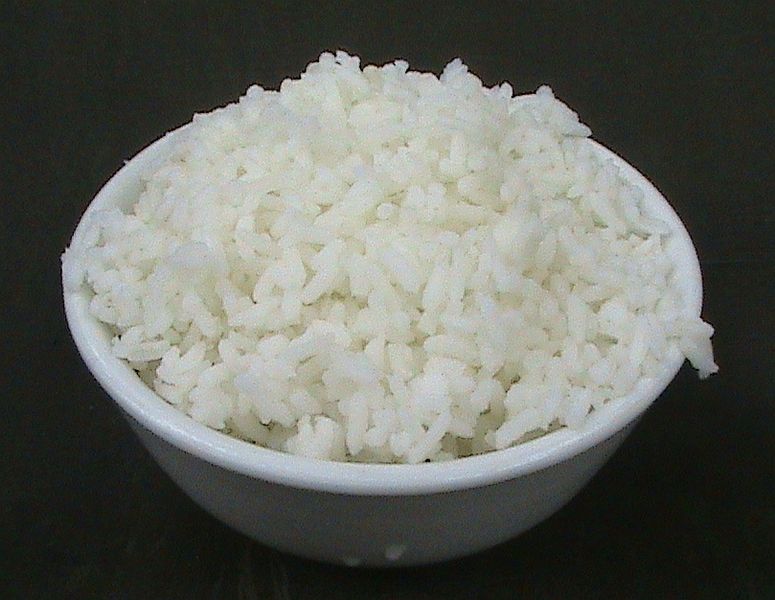
Yes, you can get food poisoning from eating reheated rice. However, it’s not the reheating that causes the problem, but the way the rice has been stored before it is reheated.
How does reheated rice cause food poisoning?
Uncooked rice can contain spores of Bacillus cereus, a bacterium that can cause food poisoning. The spores can survive when rice is cooked.
If rice is left standing at room temperature, the spores can grow into bacteria. These bacteria will multiply and may produce toxins (poisons) that cause vomiting or diarrhoea.
The longer cooked rice is left at room temperature, the more likely it is that the bacteria or toxins could make the rice unsafe to eat.
Symptoms of food poisoning
If you eat rice that contains Bacillus cereus bacteria, you may be sick and experience vomiting or diarrhoea about one to five hours afterwards. Symptoms are relatively mild and usually last about 24 hours.
Tips on serving rice safely
- ideally, serve rice as soon as it has been cooked
- if that isn’t possible, cool the rice as quickly as possible (ideally within one hour)
- keep rice in the fridge for no more than one day until reheating
- when you reheat any rice, always check the dish is steaming hot all the way through (boiling hot 212 degrees F)
- do not reheat rice more than once
Official recommendations for Leftovers
Leftovers and Food Safety
Often when we cook at home or eat in a restaurant, we have leftovers. To ensure that leftovers are safe to eat, make sure the food is cooked to a safe temperature and refrigerate the leftovers promptly. Not cooking food to a safe temperature and leaving food out at an unsafe temperature are the two main causes of foodborne illness. Safe handling of leftovers is very important to reducing foodborne illness. Follow the USDA Food Safety and Inspection Service’s recommendations for handling leftovers safely.
- Cook Food Safely at Home
- Keep Food out of the “Danger Zone“
- Cool Food Rapidly
- Wrap Leftovers Well
- Store Leftovers Safely
- Thaw Frozen Leftovers Safely
- Reheating Leftovers without Thawing
- Reheat Leftovers Safely
- Refreezing Previously Frozen Leftovers
Cook Food Safely at Home
The first step in having safe leftovers is cooking the food safely. Use a food thermometer to make sure that the food is cooked to a safe, minimum internal temperature.
- Red meats: Cook all raw beef, pork, lamb and veal steaks, chops, and roasts to a minimum internal temperature of 145° F as measured with a food thermometer before removing meat from the heat source. For safety and quality, allow meat to rest for at least three minutes before carving or consuming. For reasons of personal preference, consumers may choose to cook meat to higher temperatures.
- Ground meats: Cook all raw ground beef, pork, lamb, and veal to an internal temperature of 160° F as measured with a food thermometer.
- Poultry: Cook all poultry to an internal temperature of 165° F as measured with a food thermometer.
Keep Food out of the “Danger Zone”
Bacteria grow rapidly between the temperatures of 40° F and 140° F. After food is safely cooked, hot food must be kept hot at 140° F or warmer to prevent bacterial growth. Within 2 hours of cooking food or after it is removed from an appliance keeping it warm, leftovers must be refrigerated. Throw away all perishable foods that have been left in room temperature for more than 2 hours (1 hour if the temperature is over 90° F, such as at an outdoor picnic during summer).
Cold perishable food, such as chicken salad or a platter of deli meats, should be kept at 40° F or below. When serving food at a buffet, keep food hot in chafing dishes, slow cookers, or warming trays. Keep food cold by nesting dishes in bowls of ice or use small serving trays and replace them often. Discard any cold leftovers that have been left out for more than 2 hours at room temperature (1 hour when the temperature is above 90 °F).
Cool Food Rapidly
To prevent bacterial growth, it’s important to cool food rapidly so it reaches as fast as possible the safe refrigerator-storage temperature of 40° F or below. To do this, divide large amounts of food into shallow containers. A big pot of soup, for example, will take a long time to cool, inviting bacteria to multiply and increasing the danger of foodborne illness. Instead, divide the pot of soup into smaller containers so it will cool quickly.
Cut large items of food into smaller portions to cool. For whole roasts or hams, slice or cut them into smaller parts. Cut turkey into smaller pieces and refrigerate. Slice breast meat; legs and wings may be left whole.
Hot food can be placed directly in the refrigerator or be rapidly chilled in an ice or cold water bath before refrigerating.
Wrap Leftovers Well
Cover leftovers, wrap them in airtight packaging, or seal them in storage containers. These practices help keep bacteria out, retain moisture, and prevent leftovers from picking up odors from other food in the refrigerator. Immediately refrigerate or freeze the wrapped leftovers for rapid cooling.
Store Leftovers Safely
Leftovers can be kept in the refrigerator for 3 to 4 days or frozen for 3 to 4 months. Although safe indefinitely, frozen leftovers can lose moisture and flavor when stored for longer times in the freezer.
Thaw Frozen Leftovers Safely
Safe ways to thaw leftovers include the refrigerator, cold water and the microwave oven. Refrigerator thawing takes the longest but the leftovers stay safe the entire time. After thawing, the food should be used within 3 to 4 days or can be refrozen.
Cold water thawing is faster than refrigerator thawing but requires more attention. The frozen leftovers must be in a leak-proof package or plastic bag. If the bag leaks, water can get into the food and bacteria from the air or surrounding environment could enter it. Foods thawed by the cold water method should be cooked before refreezing.
Microwave thawing is the fastest method. When thawing leftovers in a microwave, continue to heat it until it reaches 165° F as measured with a food thermometer. Foods thawed in the microwave can be refrozen after heating it to this safe temperature.
Reheating Leftovers without Thawing
It is safe to reheat frozen leftovers without thawing, either in a saucepan or microwave (in the case of a soup or stew) or in the oven or microwave (for example, casseroles and combination meals). Reheating will take longer than if the food is thawed first, but it is safe to do when time is short.
Reheat Leftovers Safely
When reheating leftovers, be sure they reach 165° F as measured with a food thermometer. Reheat sauces, soups and gravies by bringing them to a rolling boil. Cover leftovers to reheat. This retains moisture and ensures that food will heat all the way through.
When reheating in the microwave, cover and rotate the food for even heating. Arrange food items evenly in a covered microwave safe glass or ceramic dish, and add some liquid if needed. Be sure the covering is microwave safe, and vent the lid or wrap to let the steam escape. The moist heat that is created will help destroy harmful bacteria and will ensure uniform cooking. Also, because microwaves have cold spots, check the temperature of the food in several places with a food thermometer and allow a resting time before checking the internal temperature of the food with a food thermometer. Cooking continues for a longer time in dense foods such as a whole turkey or beef roast than in less dense foods like breads, small vegetables and fruits.
Refreezing Previously Frozen Leftovers
Sometimes there are leftover “leftovers.” It is safe to refreeze any food remaining after reheating previously frozen leftovers to the safe temperature of 165° F as measured with a food thermometer.
If a large container of leftovers was frozen and only a portion of it is needed, it is safe to thaw the leftovers in the refrigerator, remove the needed portion and refreeze the remainder of the thawed leftovers without reheating it.
